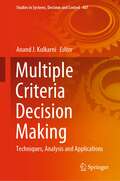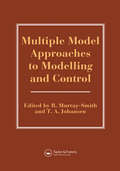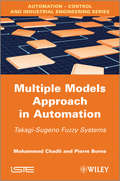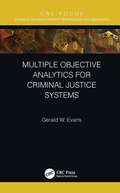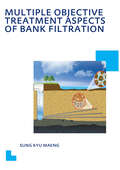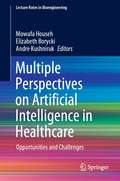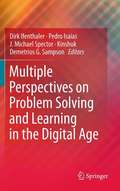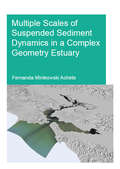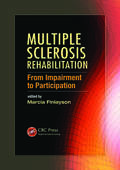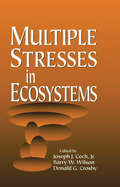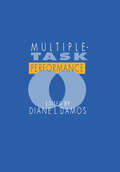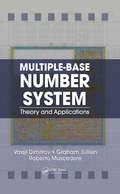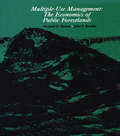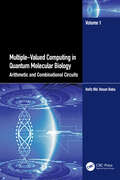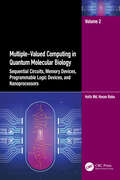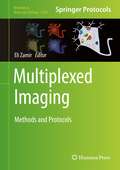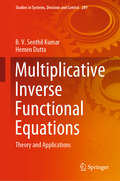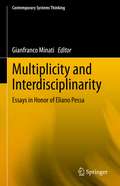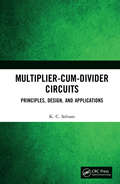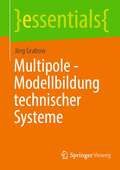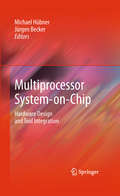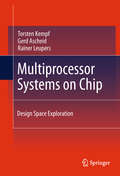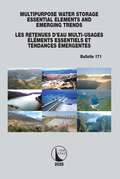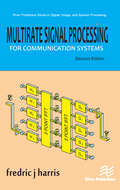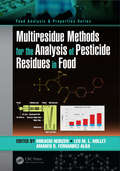- Table View
- List View
Multiple Criteria Decision Making: Techniques, Analysis and Applications (Studies in Systems, Decision and Control #407)
by Anand J. KulkarniThe book discusses state-of-the-art applications and methodologies of the Multiple Criteria Decision Making (MCDM) techniques and approaches. The book focuses on critical literature, underlying principles of methods and models, solution approaches, testing and validation, real-world applications, case studies, etc. The book helps evaluate strategic decision-making through advanced MCDM and integrated approaches of AI, big data, and IoT to provide realistic and robust solutions to the current problems. The book will be a guideline to the potential MCDM researchers about the choice of approaches for dealing with the complexities and modalities. The contributions of the book help readers to explore new avenues leading towards multidisciplinary research discussions. This book will be interesting for engineers, scientists, and students studying/working in the related areas.
Multiple Model Approaches To Nonlinear Modelling And Control
by R. Murray-Smith T. JohansenThis work presents approaches to modelling and control problems arising from conditions of ever increasing nonlinearity and complexity. It prescribes an approach that covers a wide range of methods being combined to provide multiple model solutions. Many component methods are described, as well as discussion of the strategies available for building a successful multiple model approach.
Multiple Models Approach in Automation: Takagi-Sugeno Fuzzy Systems (Wiley-iste Ser.)
by Mohammed Chadli Pierre BorneMuch work on analysis and synthesis problems relating to the multiple model approach has already been undertaken. This has been motivated by the desire to establish the problems of control law synthesis and full state estimation in numerical terms. In recent years, a general approach based on multiple LTI models (linear or affine) around various function points has been proposed. This so-called multiple model approach is a convex polytopic representation, which can be obtained either directly from a nonlinear mathematical model, through mathematical transformation or through linearization around various function points. This book concentrates on the analysis of the stability and synthesis of control laws and observations for multiple models. The authors’ approach is essentially based on Lyapunov’s second method and LMI formulation. Uncertain multiple models with unknown inputs are studied and quadratic and non-quadratic Lyapunov functions are also considered.
Multiple Objective Analytics for Criminal Justice Systems (Emerging Operations Research Methodologies and Applications)
by Gerald W. EvansCriminal justice systems are complex and difficult to design and operate. This is due to their many interacting parts, and their dynamic and probabilistic nature, as well as their interfaces with other systems. This book reviews the use of analytics to address issues in criminal justice system and discusses the various sources of data associated with the systems. This book is meant to be used by those who would like 1) an introduction to criminal justice systems and 2) an illustration of how some of the various methodologies of analytics can be used to address specific issues in criminal justice systems. This book will be of interest to faculty, students, and researchers in schools/departments of criminal justice, law, public affairs, political science, industrial engineering, and management. In addition, the book should be of use to government analysts who study the effects of criminal programs and laws.
Multiple Objective Treatment Aspects of Bank Filtration: Unesco-ihe Phd Thesis
by Sung Kyu MaengBank filtration (BF) is a natural water treatment process which induces surface water to flow in response to a hydraulic gradient through soil/sediment and into a vertical or horizontal well. It is a relatively cost-effective, robust and sustainable technology. From a historical perspective, BF is first mentioned in the bible, and the process has been recognized as a proven method for drinking water treatment in Europe for more than 100 years. However, the mechanisms of removal of different contaminants during BF are not fully understood. This study showed that BF is an effective multiple objective barrier for removal of different contaminants present in surface water sources including bulk organic matter and organic micropollutants (OMPs) like pharmaceutically active compounds and endocrine disrupting compounds. It was found that biodegradation and adsorption play primary and secondary roles, respectively, in the removal of OMPs during soil passage. Furthermore, using field data from BF sites and chemical properties of OMPs, models were developed to estimate the removal of OMPs during soil passage. It can be concluded that the removal efficiencies of BF for these contaminants can be maximised by proper design and operation of recovery wells taking into consideration source water quality characteristics and local hydrogeological conditions.
Multiple Perspectives on Artificial Intelligence in Healthcare: Opportunities and Challenges (Lecture Notes in Bioengineering)
by Mowafa Househ Elizabeth Borycki Andre KushnirukThis book offers a comprehensive yet concise overview of the challenges and opportunities presented by the use of artificial intelligence in healthcare. It does so by approaching the topic from multiple perspectives, e.g. the nursing, consumer, medical practitioner, healthcare manager, and data analyst perspective. It covers human factors research, discusses patient safety issues, and addresses ethical challenges, as well as important policy issues. By reporting on cutting-edge research and hands-on experience, the book offers an insightful reference guide for health information technology professionals, healthcare managers, healthcare practitioners, and patients alike, aiding them in their decision-making processes. It will also benefit students and researchers whose work involves artificial intelligence-related research issues in healthcare.
Multiple Perspectives on Problem Solving and Learning in the Digital Age
by Dirk Ifenthaler J. Michael Spector Kinshuk Pedro Isaias Demetrios G. SampsonThis edited volume with selected expanded papers from CELDA (Cognition and Exploratory Learning in the Digital Age) 2009 (http://www.celda-conf.org/) addresses the main issues concerned with problem solving, evolving learning processes, innovative pedagogies, and technology-based educational applications in the digital age. There have been advances in both cognitive psychology and computing that have affected the educational arena. The convergence of these two disciplines is increasing at a fast pace and affecting academia and professional practice in many ways. Paradigms such as just-in-time learning, constructivism, student-centered learning and collaborative approaches have emerged and are being supported by technological advancements such as simulations, virtual reality and multi-agents systems. These developments have created both opportunities and areas of serious concerns. This volume aims to cover both technological as well as pedagogical issues related to these developments.
Multiple Scales of Suspended Sediment Dynamics in a Complex Geometry Estuary (IHE Delft PhD Thesis Series)
by Fernanda Minikowski AcheteMany estuaries are located in urbanized, highly engineered environments. Cohesive sediment plays an important role due to its link with estuarine health and ecology. An important ecological parameter is the suspended sediment concentration (SSC) translated into turbidity levels and sediment budget. This study contributes to investigate and forecast turbidity levels and sediment budget variability at San Francisco Bay-Delta system at a variety of spatial and temporal scales applying a flexible mesh process-based model (Delft3D FM). It is possible to have a robust sediment model, which reproduces 90% of the yearly data derived sediment budget, with simple model settings, like applying one mud fraction and a simple bottom sediment distribution. This finding opens the horizon for modeling less monitored estuaries.Comparing two case studies, i.e. the Sacramento-San Joaquin Delta and Alviso Slough, a classification for estuaries regarding the main sediment dynamic forcing is proposed: event-driven estuary (Delta) and tide-driven estuary (Alviso Slough). In the event-driven estuaries, the rivers are the main sediment source and the tides have minor impact in the net sediment transport. In the tide-driven estuaries, the main sediment source is the bottom sediment and the tide asymmetry defines the net sediment transport.This research also makes advances in connecting different scientific fields and developing a managerial tool to support decision making. It provides the basis to a chain of models, which goes from the hydrodynamics, to suspended sediment, to phytoplankton, to fish, clams and marshes.
Multiple Sclerosis Rehabilitation: From Impairment to Participation (Rehabilitation Science in Practice Series)
by Marcia Finlayson"MS is always in the back of your mind. If there is something you want to do, you always wonder if the MS will allow you do to it."-Darlene, living with MS for 22 yearsLiving with multiple sclerosis (MS) is challenging and multidimensional. MS pervades all aspects of life: one's body becomes unpredictable and unreliable, one's identity and sense of
Multiple Stresses in Ecosystems
by Jr. Cech Barry W. Wilson Donald G. CrosbyEcotoxicology is the evaluation of toxic effects within the environment, typically within one specific ecosystem, like a forest, stream, or lake. For years now, ecotoxicological studies have tended to focus on one toxicant at a time. But that isn't how an ecosystem encounters toxicants (or stresses): there may be several elements at work in the air, several more in the water, and still more already within the soil of any given ecosystem, and all have some level of toxic influence on that ecosystem. Multiple Stresses in Ecosystems presents the state-of-the-art in determining the effects of these multiple impacts upon ecosystems.Resulting from a vanguard conference originally held in 1993 at UC Davis, this new work is divided into three sections that present methodolgies for assessing the health of an ecosystem; the effects of multiple toxicological impacts upon an ecosystem, and which tools are worth using to assess these dangers. Environmental scientists, chemists, toxicologists, risk analysts, and probably the entire membership of SETAC will find need for this book, as will wetlands scientists, ecologists, and research biologists.
Multiple Task Performance
by Diane L. DamosThis book deals with theories of multiple-task performance and focuses on learning and performance. It is primarily for professionals in human factors, psychology, or engineering who are interested in multiple-task performance but have no formal training in the area.
Multiple-Base Number System: Theory and Applications (Circuits and Electrical Engineering)
by Vassil Dimitrov Graham Jullien Roberto MuscedereComputer arithmetic has become so fundamentally embedded into digital design that many engineers are unaware of the many research advances in the area. As a result, they are losing out on emerging opportunities to optimize its use in targeted applications and technologies. In many cases, easily available standard arithmetic hardware might not necessarily be the most efficient implementation strategy. Multiple-Base Number System: Theory and Applications stands apart from the usual books on computer arithmetic with its concentration on the uses and the mathematical operations associated with the recently introduced multiple-base number system (MBNS). The book identifies and explores several diverse and never-before-considered MBNS applications (and their implementation issues) to enhance computation efficiency, specifically in digital signal processing (DSP) and public key cryptography. Despite the recent development and increasing popularity of MBNS as a specialized tool for high-performance calculations in electronic hardware and other fields, no single text has compiled all the crucial, cutting-edge information engineers need to optimize its use. The authors’ main goal was to disseminate the results of extensive design research—including much of their own—to help the widest possible audience of engineers, computer scientists, and mathematicians. Dedicated to helping readers apply discoveries in advanced integrated circuit technologies, this single reference is packed with a wealth of vital content previously scattered throughout limited-circulation technical and mathematical journals and papers—resources generally accessible only to researchers and designers working in highly specialized fields. Leveling the informational playing field, this resource guides readers through an in-depth analysis of theory, architectural techniques, and the latest research on the subject, subsequently laying the groundwork users require to begin applying MBNS.
Multiple-Use Management: The Economics of Public Forestlands
by John V. Krutilla Michael D. BowesIn this book, Bowes and Krutilla bring together what is known and relevant about valuing the nonmarket services of the public forests and propose a new theoretical framework that allows multiple uses, the biological dynamics of the forest, and the institutional and economic realities of public forest management to be taken into account in forest planning and budgeting. The authors begin by tracing the development of multiple use in forest management and by exploring the multiple uses of the public forests and the economics of multiple-use forestry. They offer a masterful analysis of the nineteenth-century model of the single timber stand on which much forestry practice has been premised. Bowes and Krutilla then take a giant step forward by developing a larger theoretical framework and showing how forest structure and dynamics can be included in the economic model. The authors' rigorous exposition theory provides the foundation for analyzing case studies of management for timber and water yields in the Rockies, of recreation valuation in the Black Hills and White Mountain national forests, and of joint production in the White Clouds Peaks --- analyses that demonstrate the authors' great skill in developing practical methodologies to meet actual forest management problems.
Multiple-Valued Computing in Quantum Molecular Biology: Arithmetic and Combinational Circuits
by Hafiz Md. BabuThis book focuses on the design methodologies of various quantum circuits, DNA circuits, DNA-quantum circuits and quantum-DNA circuits. It considers the merits and challenges of multivalued logic circuits in quantum, DNA, quantum-DNA and DNA-quantum computing. Multiple-Valued Computing in Quantum Molecular Biology: Arithmetic and Combinational Circuits is Volume 1 of a two-volume set. From fundamentals to advanced levels, this book discusses different multiple-valued logic DNA-quantum and quantum-DNA circuits. The text consists of four parts. Part I introduces multiple-valued quantum computing and DNA computing. It contains the basic understanding of multiple-valued quantum computing, multiple-valued DNA computing, multiple-valued quantum-DNA computing and multiple-valued DNA-quantum computing. Part II examines heat calculation, speed calculation, heat transfer, data conversion and data management in multi-valued quantum, DNA, quantum-DNA and DNA-quantum computing. Part III discusses multiple-valued logic operations in quantum and DNA computing such as ternary AND, NAND, OR, NOR, XOR, XNOR and multiple-valued arithmetic operations such as adder, multiplier, divider and more. Quantum-DNA and DNA-quantum multiple-valued arithmetic operations are also explained in this section. Part IV explains multiple-valued quantum and DNA combinational circuits such as multiple-valued DNA-quantum and quantum-DNA multiplexer, demultiplexer, encoder and decoder. This book will be of great help to researchers and students in quantum computing, DNA computing, quantum-DNA computing and DNA-quantum computing researchers.
Multiple-Valued Computing in Quantum Molecular Biology: Sequential Circuits, Memory Devices, Programmable Logic Devices, and Nanoprocessors
by Hafiz Md. BabuThis book mainly focuses on the design methodologies of various quantum circuits, DNA circuits, DNA-quantum circuits, and quantum-DNA circuits. In this text, the author has compiled various design aspects of multiple-valued logic DNA-quantum and quantum-DNA sequential circuits, memory devices, programmable logic devices, and nanoprocessors. Multiple-Valued Computing in Quantum Molecular Biology: Sequential Circuits, Memory Devices, Programmable Logic Devices, and Nanoprocessors is Volume 2 of a two-volume set, and consists of four parts. This book presents various design aspects of multiple-valued logic DNA-quantum and quantum-DNA sequential circuits, memory devices, programmable logic devices, and nanoprocessors. Part I discusses multiple-valued quantum and DNA sequential circuits such as D flip-flop, SR latch, SR flip-flop, JK flip-flop, T flip-flop, shift register, ripple counter, and synchronous counter, which are described, respectively, with the applications and working procedures. After that, multiple-valued quantum-DNA and DNA-quantum sequential circuits such as D flip-flop, SR flip-flop, JK flip-flop, T flip-flop, shift register, ripple counter and synchronous counter circuits are explained with working procedures and architecture. Part II discusses the architecture and design procedure of memory devices such as random access memory (RAM), read-only memory (ROM), programmable read-only memory (PROM), and cache memory, which are sequentially described in multiple-valued quantum, DNA, quantum-DNA, and DNA-quantum computing. In Part III, the author examines the architectures and working principles of programmable logic devices such as programmable logic array (PLA), programmable array logic (PAL), field programmable gate array (FPGA), and complex programmable logic device (CPLD) in multiple-valued quantum, DNA, quantum-DNA, and DNA-quantum computing. Multiple-valued quantum, DNA, quantum-DNA, and DNA-quantum nanoprocessors are designed with algorithms in Part IV. Furthermore, the basic components of ternary nanoprocessors such as T-RAM, ternary instruction register, ternary incrementor circuit, ternary decoder, ternary multiplexer, ternary accumulator in quantum, DNA, quantum-DNA, and DNA-quantum computing are also explained in detail. This book will be of great help to researchers and students in quantum computing, DNA computing, quantum-DNA computing, and DNA-quantum computing.
Multiplexed Imaging: Methods and Protocols (Methods in Molecular Biology #2350)
by Eli ZamirThis volume provides a collection of state-of-the-art approaches addressing key aspects of multiplexed imaging. Chapters focus on labeling and imaging techniques for multiplexed imaging, as well as on the application of these techniques for the study of cells and tissues. Written in the highly successful Methods in Molecular Biology series format, chapters include introductions to their respective topics, lists of the necessary materials and reagents, step-by-step, readily reproducible laboratory protocols, and tips on troubleshooting and avoiding known pitfalls. Authoritative and practical, Multiplexed Imaging: Methods and Protocols aims to be helpful for researchers interested in implementing multiplexed imaging or in developing novel, cutting-edge multiplexed imaging approaches.
Multiplicative Inverse Functional Equations: Theory and Applications (Studies in Systems, Decision and Control #289)
by Hemen Dutta B. V. Senthil KumarThis book introduces readers to numerous multiplicative inverse functional equations and their stability results in various spaces. This type of functional equation can be of use in solving many physical problems and also has significant relevance in various scientific fields of research and study. In particular, multiplicative inverse functional equations have applications in electric circuit theory, physics, and relations connecting the harmonic mean and arithmetic mean of several values. Providing a wealth of essential insights and new concepts in the field of functional equations, the book is chiefly intended for researchers, graduate schools, graduate students, and educators, and can also used for seminars in analysis covering topics of functional equations.
Multiplicity and Interdisciplinarity: Essays in Honor of Eliano Pessa (Contemporary Systems Thinking)
by Gianfranco MinatiThis book presents the human, cultural, and scientific contributions of professor Eliano Pessa, who recently passed away. His research interests and activities were varied, some of which included quantum physics, cognitive science and psychology, systems science, artificial intelligence, and alpinism. They were never disciplinary-separated issues, but rather some coherent dimensions of his interests in life. He lived and not only practiced interdisciplinarity and multiple dimensions; he considered it unacceptable to do only one thing in life. The contributors in this volume consider, discuss, interpret, and represent the multiplicity and interdisciplinarity experienced, lived and applied by Pessa. The chapters are inspired by, rebuild, and retrace such networked interests lived by him from the personal, cultural, and scientific points of view of the authors. This is true interdisciplinarity and usage of non-equivalences, honoring the richness of Pessa's contributions.
Multiplier-Cum-Divider Circuits: Principles, Design, and Applications
by KC SelvamThis reference text discusses principles, design, and applications of various types of multiplier-cum-divider circuits (MCDs), and covers applications of operational amplifiers to perform as MCDs circuits The text covers principles of multiplying circuits, dividing circuits, square rooting, and vector magnitude circuits in detail. It discusses how multiplier-cum-divider circuits are developed with saw tooth and triangular waves. It covers important topics including non-linear op-amp circuits, triangular wave referenced multiplier-cum-divider with multiplexes, saw tooth wave referenced MCD with analog switches, peak responding MCD with analog switches and triangular wave referenced MCD with analog switches. The text will be useful for senior undergraduate, graduate students, and professionals in the fields of electrical engineering, and electronics and communication engineering.
Multipole - Modellbildung technischer Systeme (essentials)
by Jörg GrabowDas vorliegende essential beschreibt einen allgemeingültigen, strukturierten Modellbildungsprozess für technische Systeme (Mechatronische Systeme) auf Basis von Multipolen. Die Verschiedenheit physikalisch-technischer Teilsysteme macht zunächst unterschiedliche Ordnungskriterien physikalischer Grundgrößen notwendig. Auf Grundlage dieser Ordnungskriterien werden anschließend allgemeingültige, physikalische Basisgrößen eingeführt, welche im Weiteren zu unabhängigen Teilsystemen erweitert werden. Abschließend erfolgt eine Verkopplung der unabhängigen Teilsysteme in Form von Multipolen über die Methoden der Netzwerkanalyse. Kurze Beispiele zu den jeweiligen Teilkomplexen ergänzen die theoretischen Ausführungen an geeigneter Stelle.
Multiprocessor System-on-Chip
by Michael Hübner Jürgen BeckerThe purpose of this book is to evaluate strategies for future system design in multiprocessor system-on-chip (MPSoC) architectures. Both hardware design and integration of new development tools will be discussed. Novel trends in MPSoC design, combined with reconfigurable architectures are a main topic of concern. The main emphasis is on architectures, design-flow, tool-development, applications and system design.
Multiprocessor Systems on Chip
by Rainer Leupers Torsten Kempf Gerd AscheidThis book gives a comprehensive introduction to the design challenges of MPSoC platforms, focusing on early design space exploration. It defines an iterative methodology to increase the abstraction level so that evaluation of design decisions can be performed earlier in the design process. These techniques enable exploration on the system level before undertaking time- and cost-intensive development.
Multipurpose Water Storage Essential Elements and Emerging Trends / Les Retenues d'Eau Multi-Usages Élements Essentiels et Tendances Émergentes: ICOLD Bulletin 171 (ICOLD Bulletins Series)
by International Commission on Large Dams Commission Internationale Des Grands BarragesThe bulletin is structured to present the global and local role of water storage in the modern world and provide the basis for multi-purpose developments in the context of the hydrological cycle, the water-energy nexus, stakeholder engagement and environmental assessments.The bulletin explores the economic and financial prospects of multi-purpose projects and the need for long-term planning, including reservoir conservation, as well as the challenges of forecasting long-term scenarios. It deals with the institutional and procurement aspects of infrastructure development and management, also addressing water governance and its interface with corporate governance. Drawing on case studies, the bulletin then presents structural and non-structural solutions to improve development, operation and management, and illustrates how water conservation and adaptive management are essential to obtaining the “social license to operate” reservoirs and their ancillary infrastructure. The bulletin concludes with a presentation of essential elements and emerging trends, as well as a technique for assessing the relative criticality of essential elements as they evolve throughout a reservoir's life cycle.Le présent bulletin a pour objectif de fournir une perspective approfondie sur la dynamique des Systèmes Multiples de Production d’Eau. L'accent de ce bulletin n'est donc pas mis sur ce qui devrait être fait, mais sur ce qui est actuellement entrepris, ainsi que sur les méthodes et les acteurs impliqués. C'est pour cette raison que les conclusions et réflexions issues de l'examen des études de cas ne sont pas présentées sous forme de directives, mais sous forme d’« éléments essentiels » et de « tendances émergentes » recommandés.Le bulletin est structuré de manière à présenter le rôle global et local du stockage d'eau dans le monde moderne et fournir les bases des développements polyvalents dans le contexte du cycle hydrologique, du lien entre l'eau et l'énergie, de l'engagement des parties prenantes et des évaluations environnementales. Le bulletin explore les perspectives économiques et financières des projets polyvalents et la nécessité d'une planification à long terme, y compris la conservation des réservoirs, ainsi que les défis de la prévision des scénarios à long terme. Il traite les aspects institutionnels et les marchés publics liés au développement et à la gestion des infrastructures, en abordant également la gouvernance de l'eau et son interface avec la gouvernance d'entreprise. S'appuyant sur des études de cas, le bulletin présente ensuite des solutions structurelles et non-structurelles afin d’améliorer le développement, l'exploitation et la gestion, et illustre comment la conservation de l'eau et la gestion adaptative sont essentielles pour obtenir le "permis social d'exploiter" les réservoirs et leurs infrastructures annexes. Le bulletin conclut par une présentation des éléments essentiels et des tendances émergentes, ainsi qu'une technique pour évaluer la criticité relative des éléments essentiels au fur et à mesure de leur évolution tout au long du cycle de vie d'un réservoir.
Multirate Signal Processing for Communication Systems (River Publishers Series In Signal, Image And Speech Processing Ser.)
by Fredric J. HarrisMultirate Signal processing can improve system performance and reduce costs in applications ranging from laboratory instruments, cable modems, wireless systems, satellites, Radar, Sonar, and consumer entertainment products. This second edition continues to offer a systematic, clear, and intuitive introduction to multirate signal processing for working engineers and system designers. Significant new material and fresh concepts, including Green Signal Processing techniques have been introduced. The author uses extensive examples and figures to illustrate a wide range of multirate techniques, from basic resampling to leading-edge cascade and multi-stage filter structures. Along the way he draws on extensive research and consulting experience to introduce processing “tricks” shown to maximize performance and efficiency. Coverage includes:• Effect of sampling and resampling in time and frequency domains• Relationships between FIR filter specifications and filter length (# of taps)• Window design and equal-ripple (Remez) design techniques• Square-Root Nyquist and Half-band Filters including new enhancements• Polyphase FIR filters: up-sampling, down-sampling• Polyphase M-path analysis and synthesis channelizers and cascade pairs• Polyphase interpolators for arbitrary sample rate changes• Dyadic half-band filters, quadrature mirror filters• Channel banks for multiple arbitrary bandwidths and center frequencies • Comprehensive coverage of recursive all-pass filters and channelizers, non-uniform and uniform phase, mixed recursive and non-recursive• Comparisons with traditional DSP designs• Extensive applications coverage throughout
Multiresidue Methods for the Analysis of Pesticide Residues in Food (Food Analysis & Properties)
by Leo M.L. Nollet Horacio Heinzen Amadeo R. Fernandez-AlbaIn the last decades the public concern on the pesticide residues content in foods have been steadily rising. The global development of food trade implies that aliments from everywhere in the world can reach the consumer`s table. Therefore, the identification of agricultural practices that employ different pesticides combinations and application rates to protect produce must be characterized, as they left residues that could be noxious to human health. However, the possible number of pesticides (and its metabolites of toxicological relevance) to be found in a specific commodity is almost 1500, and the time needed to analyze them one by one, makes this analytical strategy a unrealistic task. To overcome this problem, the concept of Multi Residue Methods (MRM) for the analysis of pesticide traces have been developed. The advent of new and highly sensitive instrumentation, based in hyphenatedchromatographic systems to coupled mass analyzers (XC (MS/MS) or MSn) permitted simultaneously the identification and the determination of up to hundreds of pesticide residues in a single chromatographic run. Multiresidue Methods for the Analysis of Pesticide Residues in Food presents the analytical procedures developed in the literature, as well as those currently employed in the most advanced laboratories that perform routinely Pesticide Residue Analysis in foods. In addition to these points, the regulations, guidelines and recommendations from the most important regulatory agencies of the world on the topic will be commented and contrasted.
